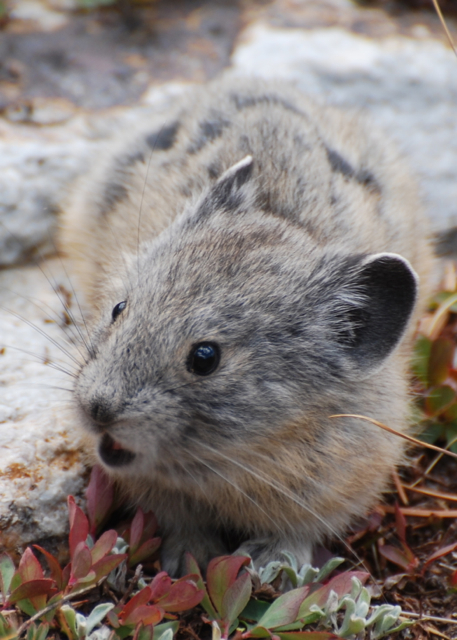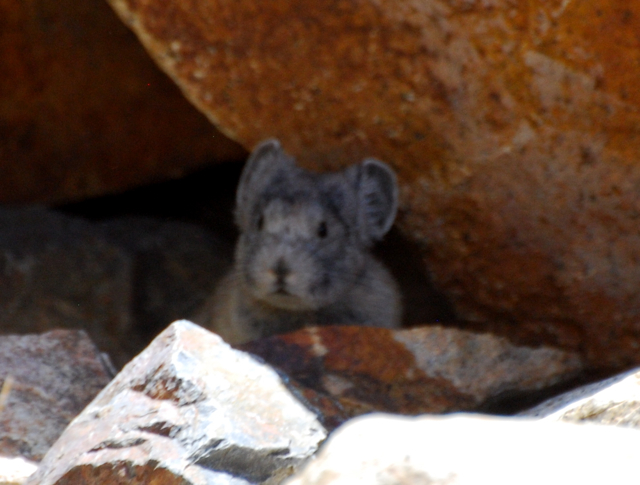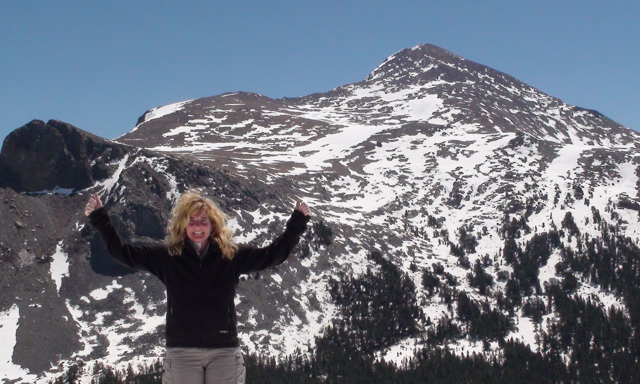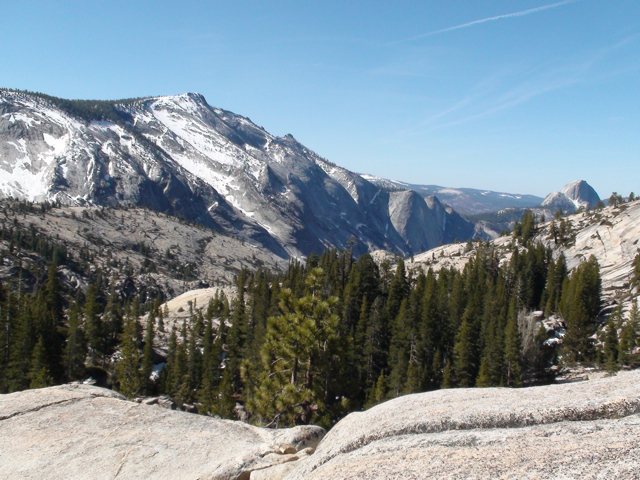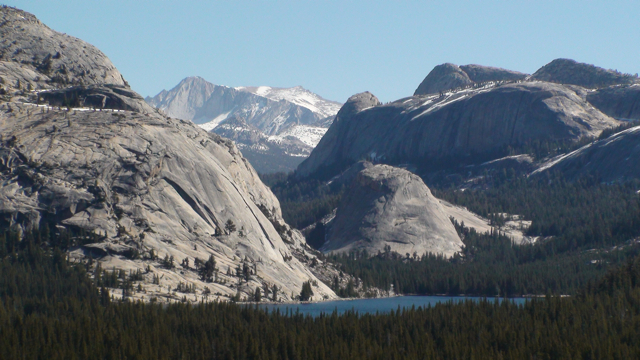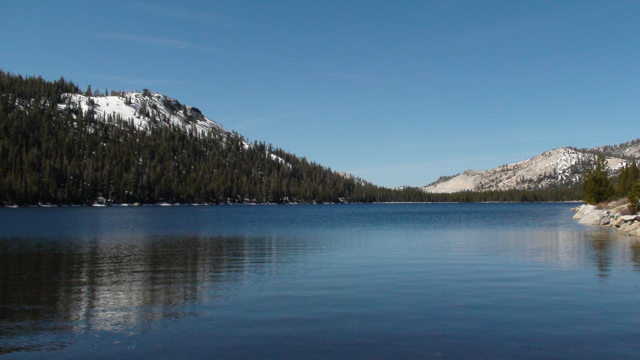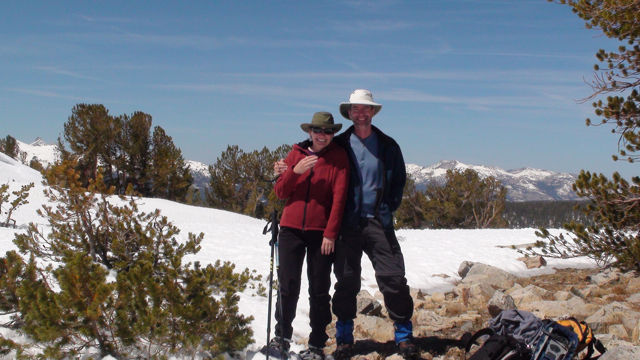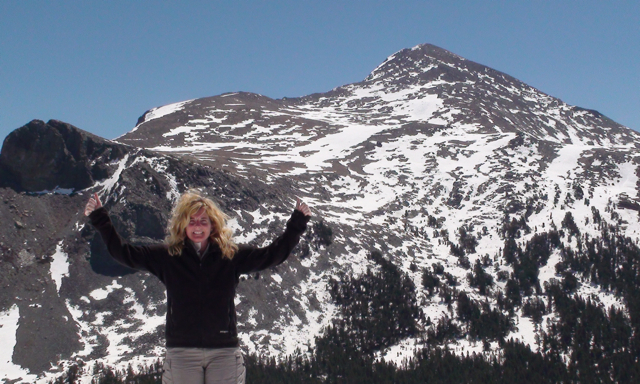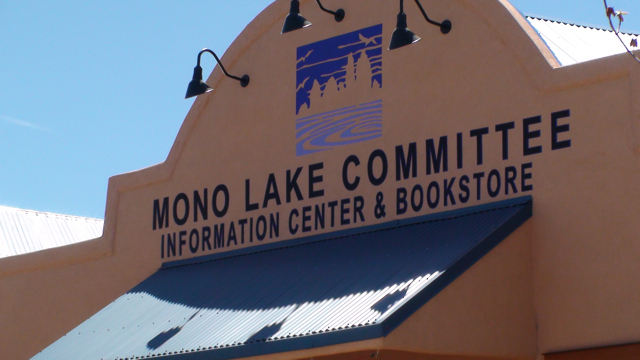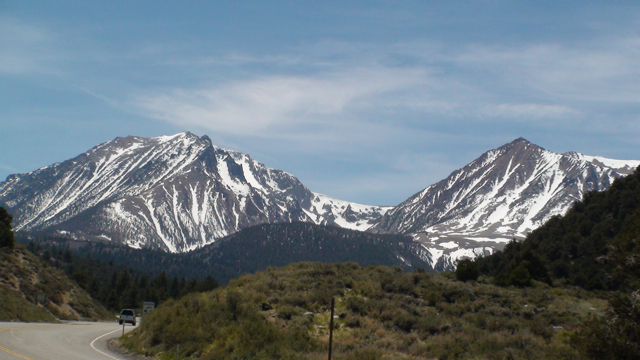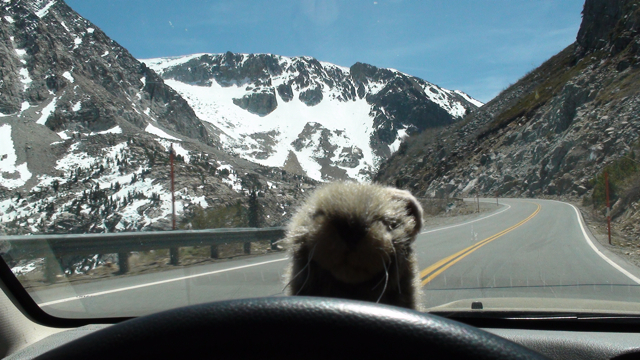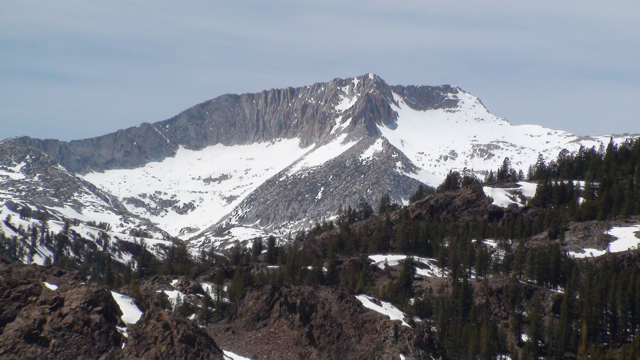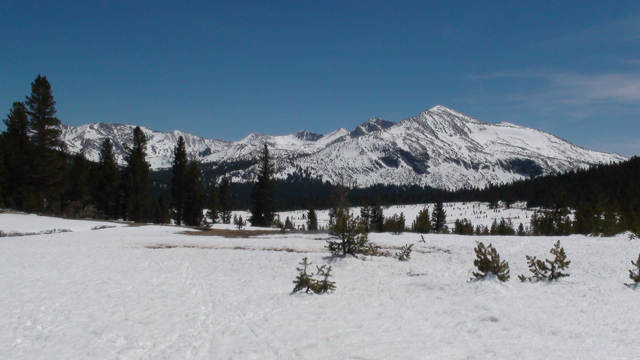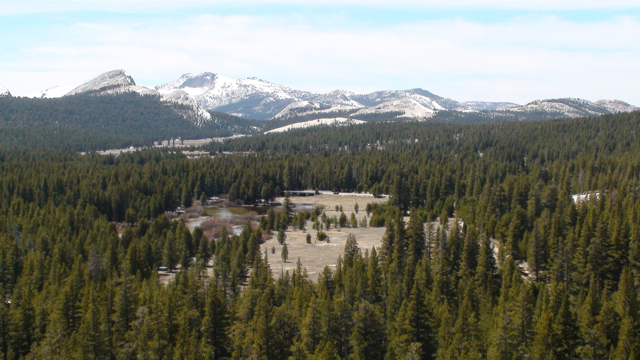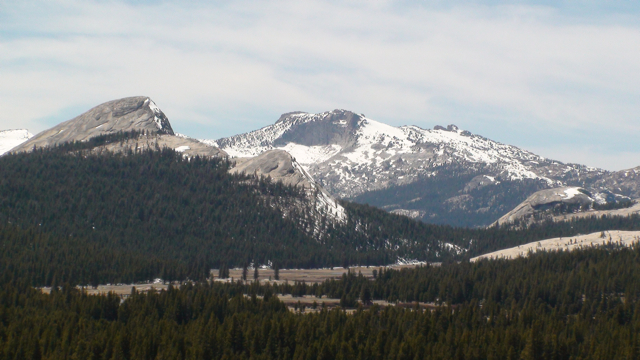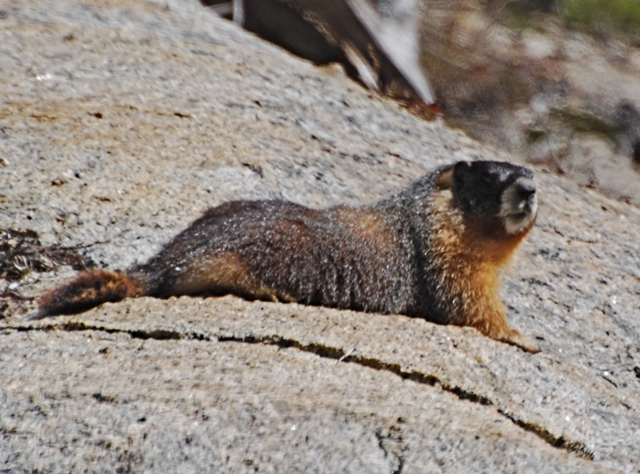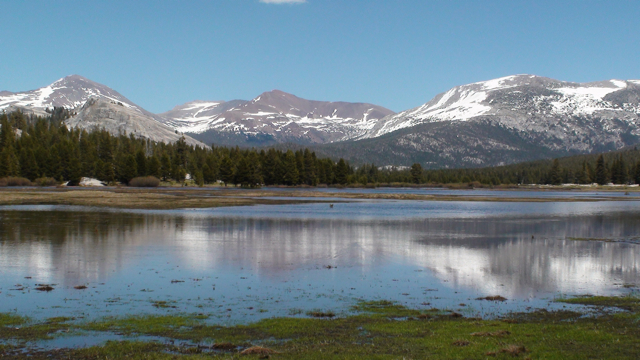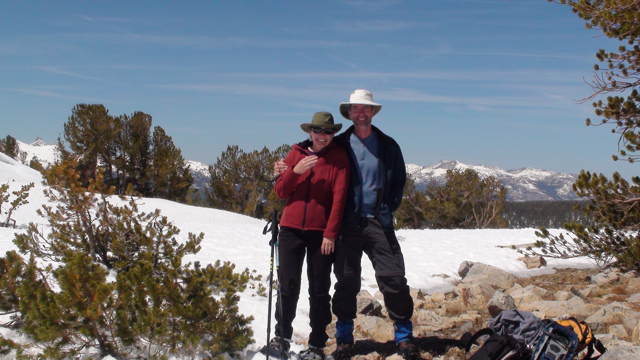 Thunderstorm over Gaylor Lake (photo by Beth Pratt)
Thunderstorm over Gaylor Lake (photo by Beth Pratt)
“Mist rising—streams falling—
snow melting—
rocks weathering
us descending.
Clark’s Nutcracker hollering
A day to be alive and wandering through.”
Gary Snyder always perfectly captures the wonderment of a day in the Sierra with his poetry. To complete the story of my amazing hike on Monday, I would just need to add a few lines about pika, pika poop, thunderstorms and Yosemite toads to the verse.
 Gaylor Lake at 11 am (photo by Beth Pratt)
Gaylor Lake at 11 am (photo by Beth Pratt) Gaylor Lake at 3 pm (photo by Beth Pratt)
Gaylor Lake at 3 pm (photo by Beth Pratt)
My friend Ranger Dick, a Yosemite Ranger for over thirty years, has a saying that "weather is always better when you are outside in it." I agree. At the end of my hike, I sat comfortably under a small grove of pine trees on Gaylor Ridge and listened to the thunder reverberating across the lake, rushing and pounding the surrounding cliffs. The thunder was a physical thing, I could feel it shake and tussle with the granite.
I wandered in the basin, looking for pika and Yosemite toads, and to my delight found both. A rocky slope near Gaylor Lake has become my almost never miss place for pika sightings--one even ran over my foot one year. Sure enough, as I approached I heard the distinctive warning chirp of the pika, and saw him dash over some rocks. I sat and watched a few of the adorable critters for some time, along with marmots and ground squirrels. And I even found some pika toilets from the winter--huge piles of poop!
 Run away! First pika sighting of the year (Photo by Beth Pratt)
Run away! First pika sighting of the year (Photo by Beth Pratt)
At lower Gaylor Lake, I listened for the trilling of the Yosemite toad, a melodious love song that signals the beginning of spring. But the low snowpack--and very dry conditions--had accelerated their annual breeding schedule and I heard only a few lonesome calls instead of the usual deafening chorus. It's not going to be a good year for the toad (and probably Sierra frogs in general) as the conditions in the Gaylor basin resemble mid-summer instead of spring. I found only one pond with egg masses and tadpoles, and many of the usual sites were dry already.
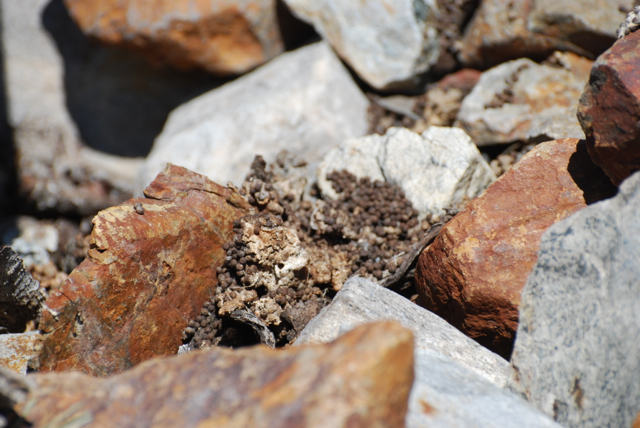 Pika poop (photo by Beth Pratt)
Pika poop (photo by Beth Pratt)
 Yosemite toad (photo by Beth Pratt)
Yosemite toad (photo by Beth Pratt) The storm over Tenaya Peak and Tenaya Lake (photo by Beth Pratt)
The storm over Tenaya Peak and Tenaya Lake (photo by Beth Pratt)


